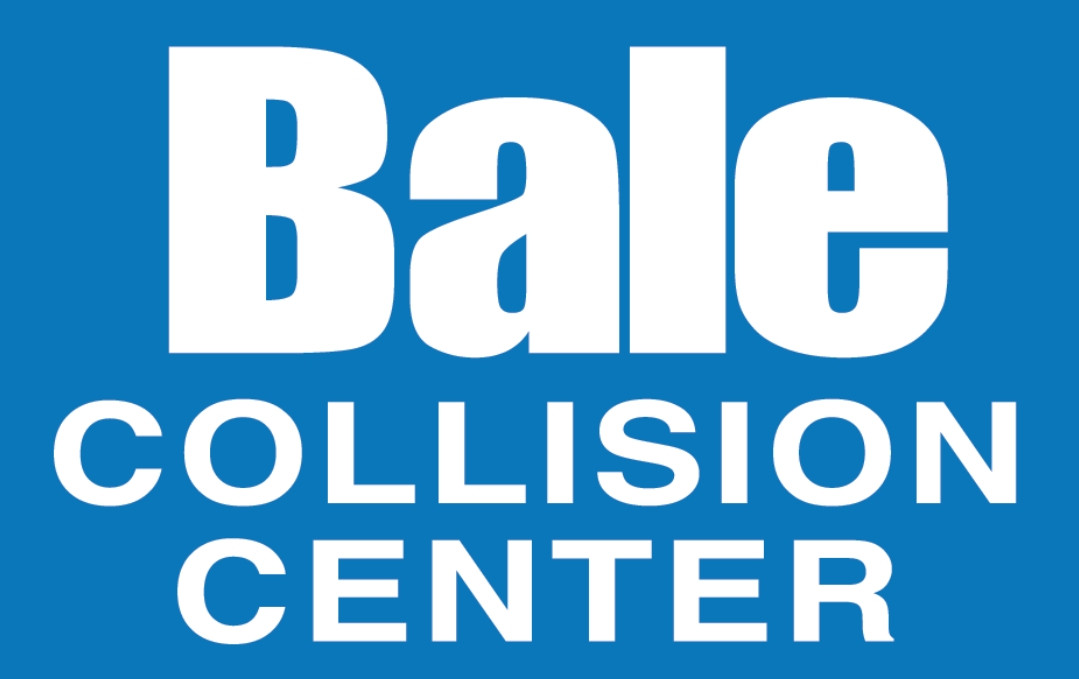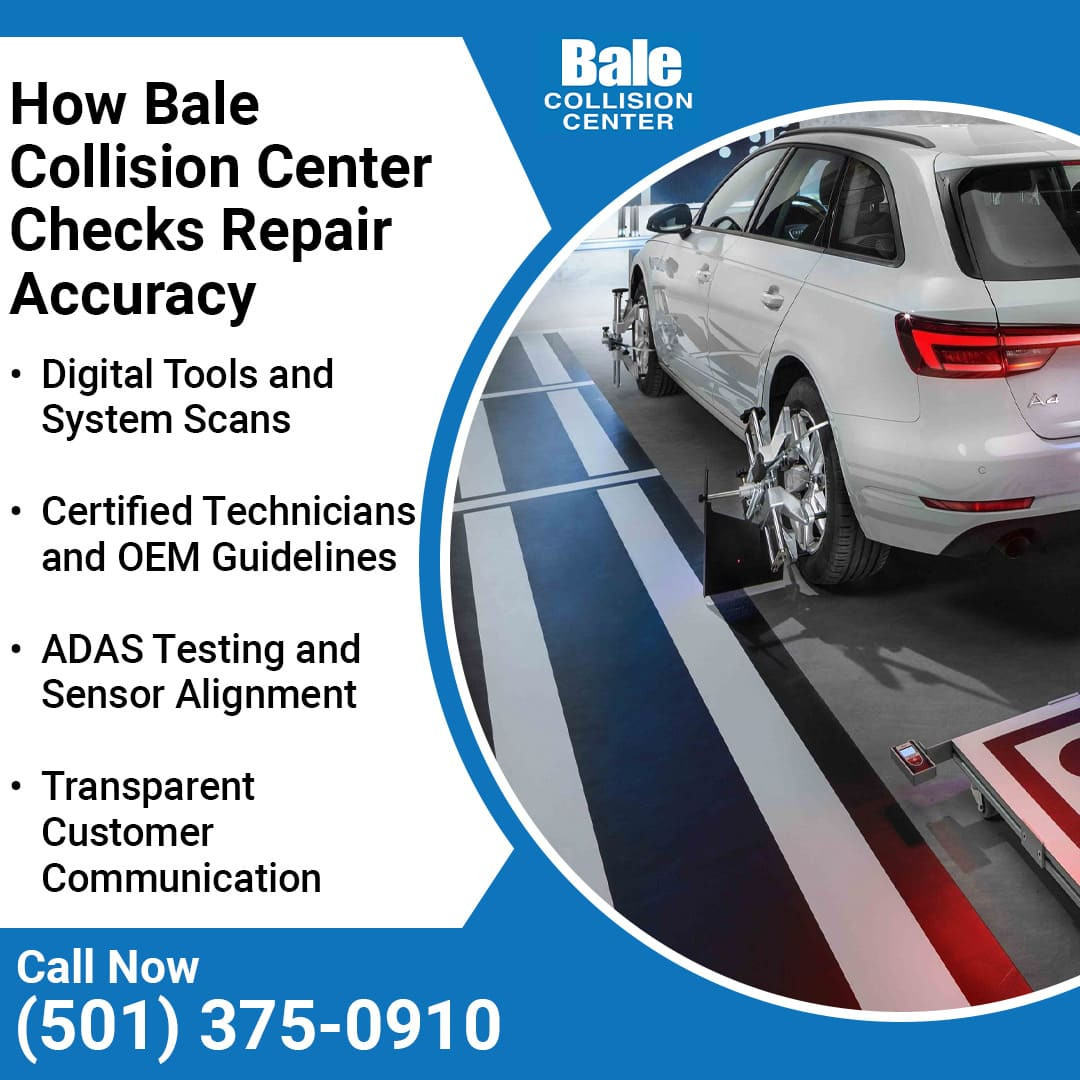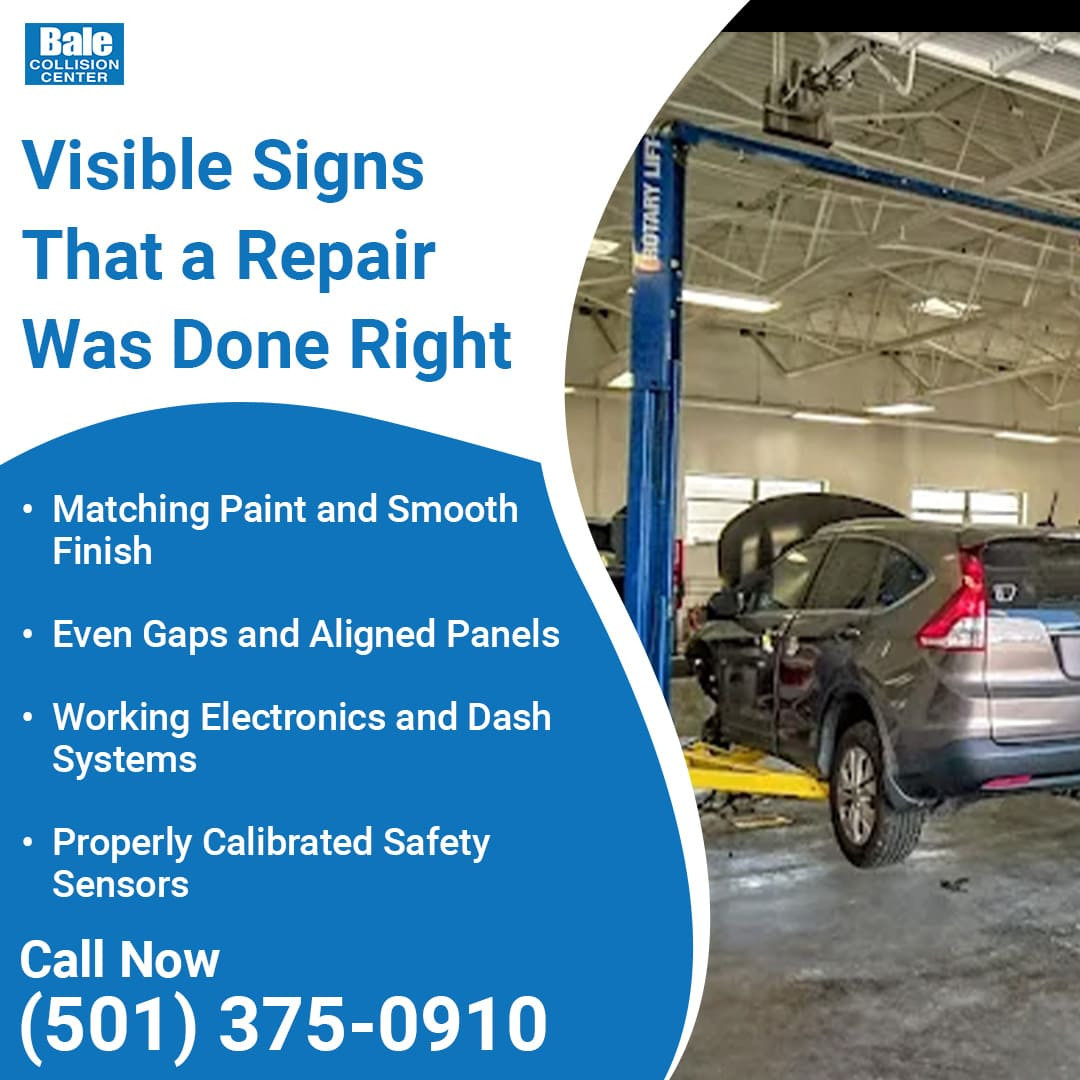How to Check if Your Car Collision Repair Was Done Properly
Little Rock, United States - June 23, 2025 / Bale Collision Center (Downtown) /
Little Rock, AR — Bale Collision Center (Downtown) provides guidance for vehicle owners in Little Rock, AR, on how to identify whether collision repairs have been completed correctly. The information focuses on visible indicators of repair quality and outlines key practices that support safety, performance, and long-term vehicle value.
Proper auto collision repair is about more than just appearance. It affects safety systems, electronic features, and the long-term value of a vehicle. Bale Collision Center explains what drivers should inspect and how to recognize quality repair work.
Why Collision Repair Quality Is So Important
Poorly done collision repairs can put vehicle safety at risk. If sensors or structural components aren’t restored to factory condition, systems like airbags, lane assist, or adaptive cruise control might fail when needed. Poor-quality repairs can also affect how the car drives, handles, and wears over time.
In addition, incorrect repairs may reduce a car’s resale value or lead to problems with insurance claims. Insurers and future buyers often check repair records and expect the work to follow manufacturer guidelines. Bale Collision Center emphasizes the importance of correct repair procedures that meet factory standards to help drivers stay safe and protect their investments.
Visible Signs That a Repair Was Done Right
Drivers don’t need to be auto experts to identify signs of proper collision repairs. Here is how to spot key indicators using basic observation.
Matching Paint and Smooth Finish
Repaired panels should match the rest of the vehicle in both color and texture. There should be no visible overspray, color differences, or dull spots. Panels should blend in with the original finish.
Even Gaps and Aligned Panels
Body panels such as doors, the hood, and the trunk should be flush and evenly spaced. Gaps that are too wide or inconsistent may point to a poor frame or body repair.
Working Electronics and Dash Systems
After a collision repair, all electronics, like airbags, sensors, power windows, and lighting, should work properly. Warning lights on the dashboard should be off. If any systems seem off, it’s a sign that deeper diagnostics may be needed.
Properly Calibrated Safety Sensors
Modern vehicles rely on Advanced Driver Assistance Systems (ADAS), including lane keeping, emergency braking, and parking sensors. These systems must be recalibrated after a collision. Without calibration, they may not work or could behave unpredictably.
How Bale Collision Center Checks Repair Accuracy
Bale Collision Center takes several steps to confirm that every repair meets safety and quality standards.
Digital Tools and System Scans
Technicians use digital diagnostics and laser-guided frame measuring tools to detect hidden damage. Vehicles are scanned before and after repair to make sure no system errors remain.
Certified Technicians and OEM Guidelines
Repairs at the collision center in Little Rock, AR, follow the original equipment manufacturer’s (OEM) guidelines. The technicians are I-CAR Platinum certified and trained in up-to-date repair techniques for all makes and models.
ADAS Testing and Sensor Alignment
After sensor calibration, the auto body collision shop performs functional tests to verify that systems respond accurately on the road. This makes sure that the safety features work as designed.
Transparent Customer Communication
Drivers receive regular updates throughout the repair process, including detailed documentation of all work done. This helps with insurance claims and provides peace of mind that the job was done correctly.
Warning Signs of Poor Collision Repair
The common red flags of poor repair work include:
- Uneven gaps between panels
- Mismatched or dull paint
- Dashboard warning lights
- New sounds or vibrations while driving
If any of these signs appear after a repair, drivers are encouraged to get a second opinion or contact their insurance provider.
What to Do if You Suspect a Poor Repair
Bale Collision Center advises drivers to:
- Ask the shop for repair records and scan results
- Visit another certified auto body collision shop for a second opinion
- Alert their insurance provider if the repair appears incomplete or defective
These steps can help protect the value and safety of the vehicle.
Trusted Collision Repair in Little Rock, AR
Bale Collision Center is known for reliable collision repair in Little Rock, AR. The team uses high-quality tools and follows strict repair procedures to return vehicles to pre-accident condition. To schedule a repair estimate or learn more about their collision repair services, contact Bale Collision Center (Downtown) at (501) 375-0910 or email us at bccdowntown@baleautomotive.com. The team is ready to answer your questions and help you restore your vehicle with accuracy and care.

Contact Information:
Bale Collision Center (Downtown)
100 N Cross Street
Little Rock, AR 72201
United States
Jason Spiller
(501) 375-0910
https://balecollision.com/
Original Source: https://balecollision.com/collision-repair/how-to-check-if-your-car-collision-repair-was-done-properly/



